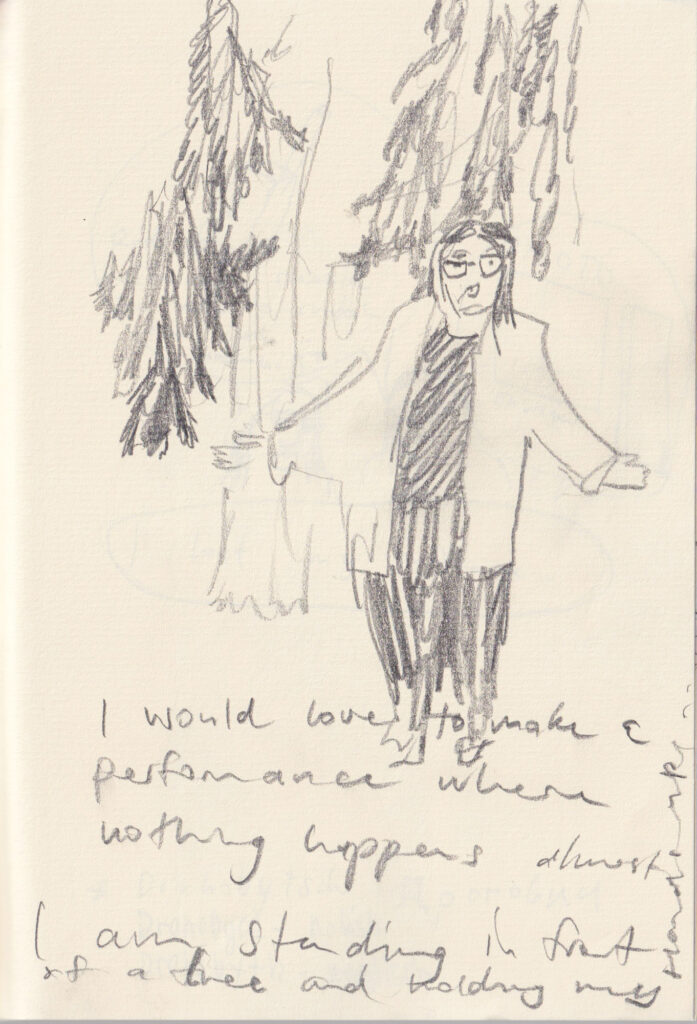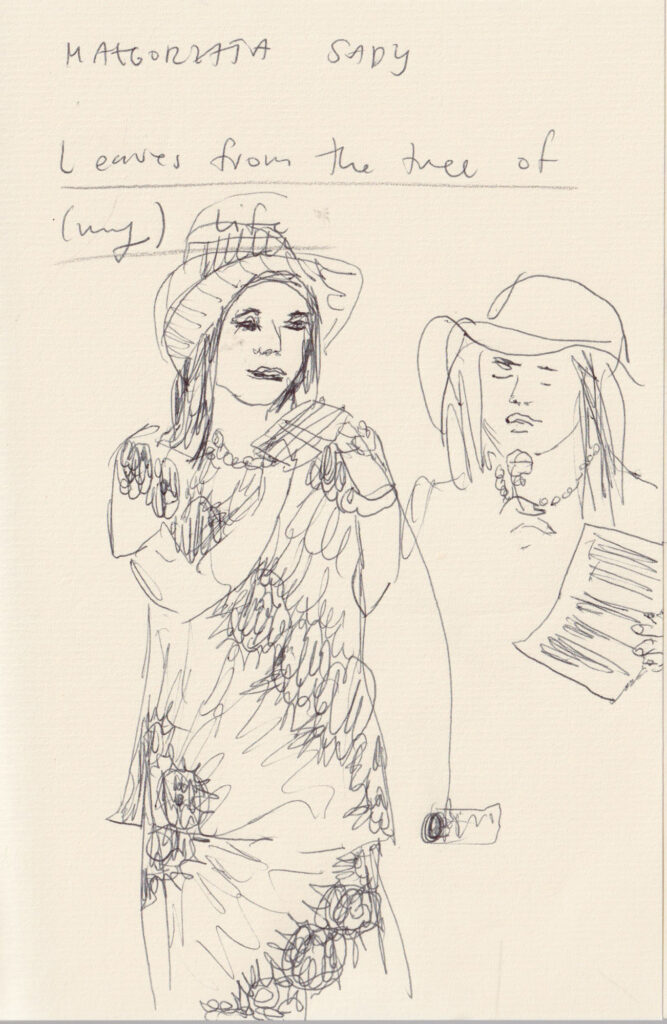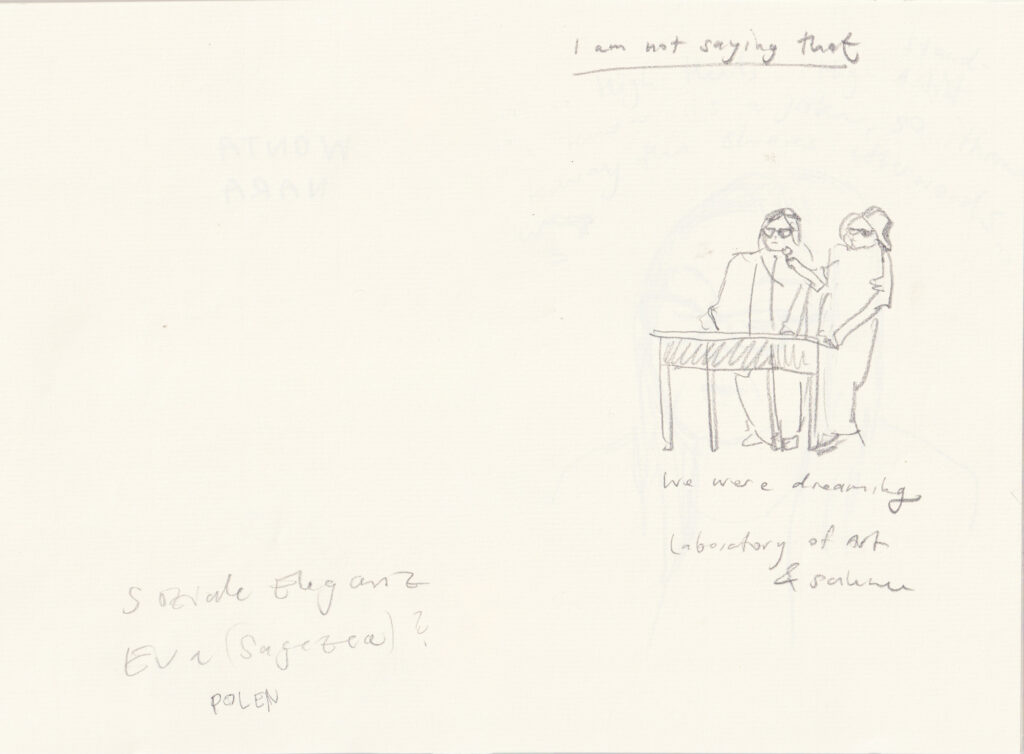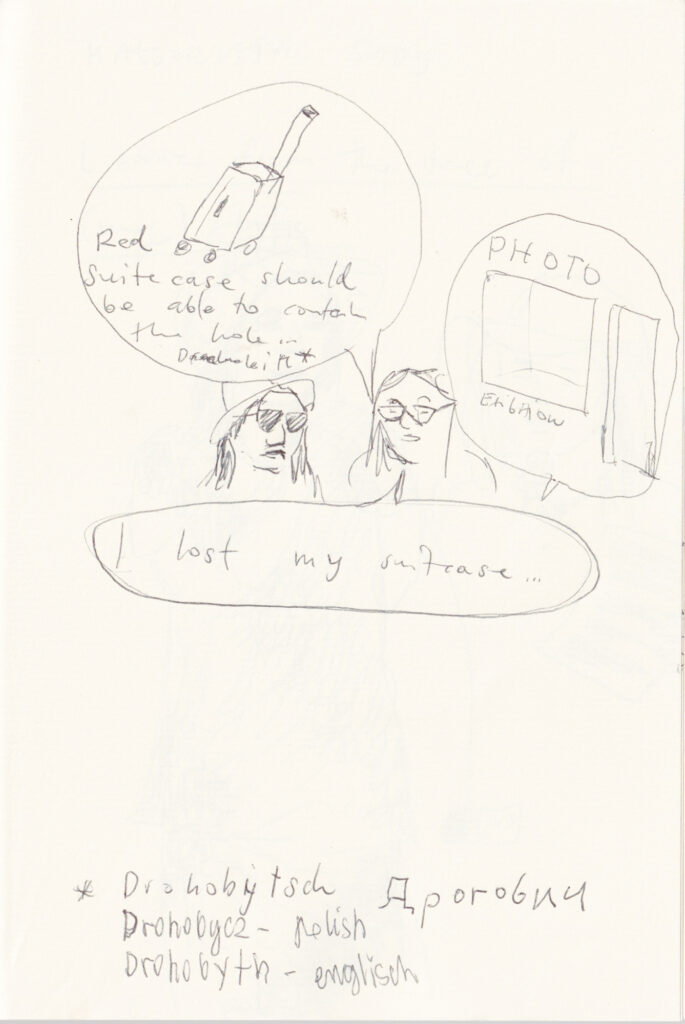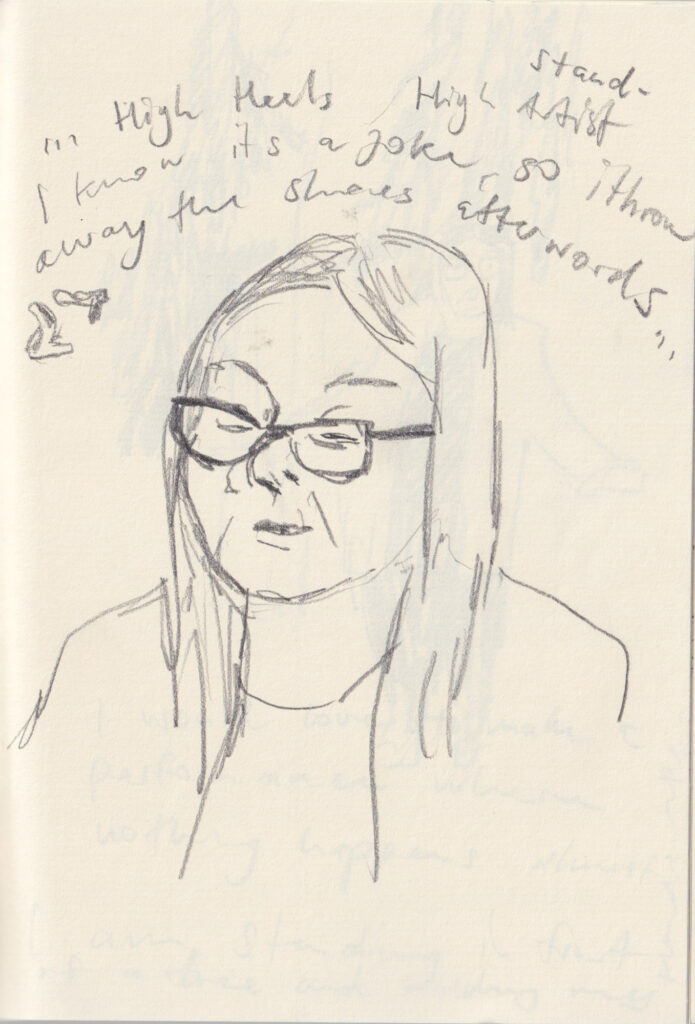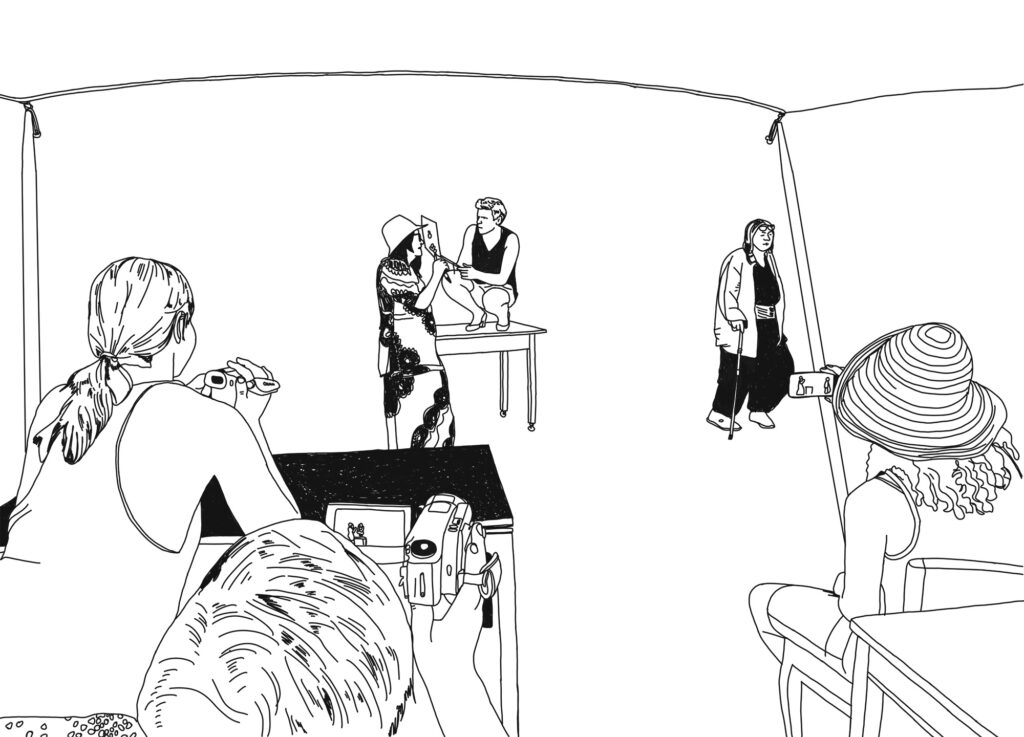und zuschauen beim „nichts machen“:-)
Malgorzata Sady: «the pieces of life (in search of poetry)»
Eine Ansammlung von Worten, Klängen und Gesten – von Versatzstücken des Lebens (eines Lebens). Man kann es auch eine Meditation nennen (oder Forschung) über das Universelle, das jedem Einzelnen innewohnt.
Die Performancekünstlerin Ewa Zarzycka zeigt eine ihrer berühmten sprachbasierten Performances.
Paweł Korbus zeigt eine für das Museum Tinguely entwickelte Performance.
Małgorzata Sady
A week in Basel, July 21 to 28
Being part of the field of non-mainstream contemporary art places us on the margins, but at the same time we form an incredibly colourful community of shared ideas and paths. Strong human bonds which constituted the core of social life have become less and less featured in the modern impersonal, technology and media-oriented world. What happened at the Tinguely Museum in Basel this summer proves that artists have this unique ability to adhere to the disappearing values and reinforce them in the inspiring and powerful way.
Bang Bang was an extraordinary exhibition with daily events accompanying it. It focused on performance art in Switzerland including the international perspective, documentation through moving images, objects, publications, diagrams-maps. Talks, discussions, and live performances were part of it. All events had their calming down sessions in the evening during delicious outdoor dinners.
How did I become included in that endless celebration of creativity? My artist friend Konrad Juściński recommended me to Hanga Sera who was a curator of one of the series of Bang Bang related events. She contacted me in December with an invitation to present my performance and participate in a panel discussion with other artists she invited namely Anette Arlander from Finland, Pinar Derin Gencer from Turkey, Elsbeth Iten from Switzerland and herself.
Replying to my question about the topic Hanga explained: “We want to focus in the discussion on the topic of the whole series of events in July: social elegance. Which means the opposite of elbow-to-elbow competition: helping each other as artists, networking, reaching possibilities. Our second main interest is “performance as research”. What are the main forces behind our ambition to create new performances? What do we use performance as a tool to examine?” Thanks to Hanga’s explanation the direction and angle became imaginable, some clarity was achieved.
I knew several Swiss performance artists introduced to me by my Polish artist friend Ewa Zarzycka and VestAndPage duo from Germany/Italy, and it turned out – not to any surprise at all – that they were involved in the project. Of course, how could it be otherwise?! I met Andrea Saemann and Chris Regn when in 2019 they came to Poland invited to CONTEXTS, the International Festival of Ephemeral Art which I curated in Sokołowsko (former Goebersdorf) for nine years. They presented participatory performance, much appreciated and discussed by the audience, and also gave a talk explaining the idea and activities of PANCH (Performance Art Network Switzerland). In 2021, after the pandemic decreased its impact on people’s action Andrea and Chris curated a Swiss performance art programme at “From Zero to Zero” artists’ meeting in Kazimierz Dolny (Poland) co-curated by Ewa Zarzycka, Paweł Korbus and me. They invited Sus Zwick, Muda Mathis, Judith Huber – their ‘pack of dogs’.
Also another Swiss performance artist participated in one of earlier edition of Contexts – Gisela Hochuli. And of course, we all met in Basel!
I did not come from Poland on my own. Having heard of me being invited our Swiss girlfirends suggested bringing another Polish artist Ewa Zarzycka (with whom we have performed together for almost twenty years – Ewa speaking and me translating her words/ideas into English to our mutual entertainment). And then Ewa suggested Paweł Korbus, a performance artist of younger generation for whom she is a true mentor. Hence our trio arrived on a flight delayed by 13 hours!
When we were entering Switzerland at the Basel airport the officer looked at my passport, then at me and asked: “Why are you wearing three hats?”. I replied: “Artistic reasons”. He said: “Then I understand”. I looked at him and asked: “Do you like it?” He said: “Very much”. I knew there would be no problem to communicate with the Swiss audience…The door for still another adventure got open.
Hanga met us at the airport then Andrea at the bus stop. I was offered exquisite accommodation in one of the PANCH studios. This venue has got a welcoming atmosphere of openness and care. As the library was moved to the Tinguely Museum for Bang Bang exhibition it acquired the flavour of a backstage which spoke so atmospherically. Ewa and Pawel stayed in a flat not far away.
Next morning, we were introduced by 3 other artists participating in Hanga’s programme. We got acquainted with each other and briefly talked about the issues we were going to discuss in front of the public, defining the meaning of crucial terms to avoid misunderstanding. It was a natural requirement as we came from different countries of different traditions and although we shared the same platform the differences were obvious.
We were then taken to the Tinguely museum for a brief visit. We did not know that place while the artist the venue is dedicated to was close to our hearts. It is a relatively new building, rather impressive architecturally with much desired location close to the Rhine river and surrounded by trees which on those extremely hot summer days was perfection.
Our quick glance at the exhibition was followed by a tour guided with Andrea and Chris another day. Being in its vicinity for next few days was beneficial and allowed exploring it gradually bit by bit. It was much desired and simply necessary as the exhibition was so condensed, covering several decades of performance art in Switzerland.
Its arrangement was impressive, and some of it technologically challenging (multiple monitors projections). Apart from permanent modules there were also two rooms for temporary individual shows, changing frequently over the summer. The amount of work put into the exhibition was immense. Maps/diagrams of Swiss performances must have taken ages to produce, selecting videos (performances and interviews), editing them, as well as gathering and selecting other exhibits – books, posters, objects, artworks, photographs. One could feel the energy of the past events passed onto the visitors in a straightforward way. In the library section we could spot (with pleasure) the Polish ingredient – books by Ewa and Zbyszek Warpechowski.
Apart from the exhibition ‘permanent’ body there were also frequently changing individual exhibitions featuring live performances, installations and documentation.
In front of the museum, next to the Tinguely mobile fountain, a little shed was built were food was being cooked and served by the artists on long tables that were as if an extension of it. Drinks and snacks were being served all day long and meals in the evening which was a perfect oppotunity for getting to know each other, exchanging thoughts and feelings. Sometimes these dinners lasted for a long time. Our bodies and our souls were nourished with delicious ideas and actual meals. Even though the artists worked in turns at those premises, there were not so many Basel based artists who undertook the majority of duties, they did not manifest fatigue or exhaustions, performing their tasks with lightness and in good spirit.
Every afternoon there were tea time sessions when you could be invited or invite yourself to have a cup of tea with an artist and talk about the issues you both considered of significance and weight.
In the programme curated by Hanga our Polish gang presented four performances – three of them were individual (although Ewa’s piece featured me as an interpreter). At the end all three of us performed a piece based on the historical performance by Ewa of some 30 years ago (elevating the position of an artist by wearing high heeled shoes).
In the discussion we exchanged our perspectives of view with the audience adding their points of view. Sitting under the trees/ Being surrounded by nature helped communication. Each person was talking about their personal experience which cannot be questioned so there was no space for controversy whereas adapting various angles, conditioned by the diversity of countries, their traditions, history, and cultures was illuminating. Any practice, not necessarily performance practice leads to personal development when realized truthfully and with dedication. Performance artists are privileged by being free to express themselves and underestimated by being placed on the margins of mainstream. It is a discipline of art that has evolved into various forms in the course of over half a century, hence organically lost its once revolutionary and groundbreaking character. At the same time there is still much space to explore as the world around us changes, not necessarily for better, forcing updated solutions. What matters is the message we want to convey in a truthful way, the form being secondary. The problem begins when form becomes a substitute for content making such enterprises fruitless. However, as nothing is forever there is always hope. As “the world is more complicated than our truths about it “ (quoting Stefan Themerson) let us approach our work with humbleness and sensitivity.
Our Polish contingent stayed in Basel for a week due to the flight schedule. These circumstances allowed us to watch more performances, meet artists and establish contacts to be continued in different places and different times. We were also looked by my good old friend Piotr Lityński who took us to Vitra design centre (Germany) and around Basel which enriched our Swiss experience.
To be continued!
